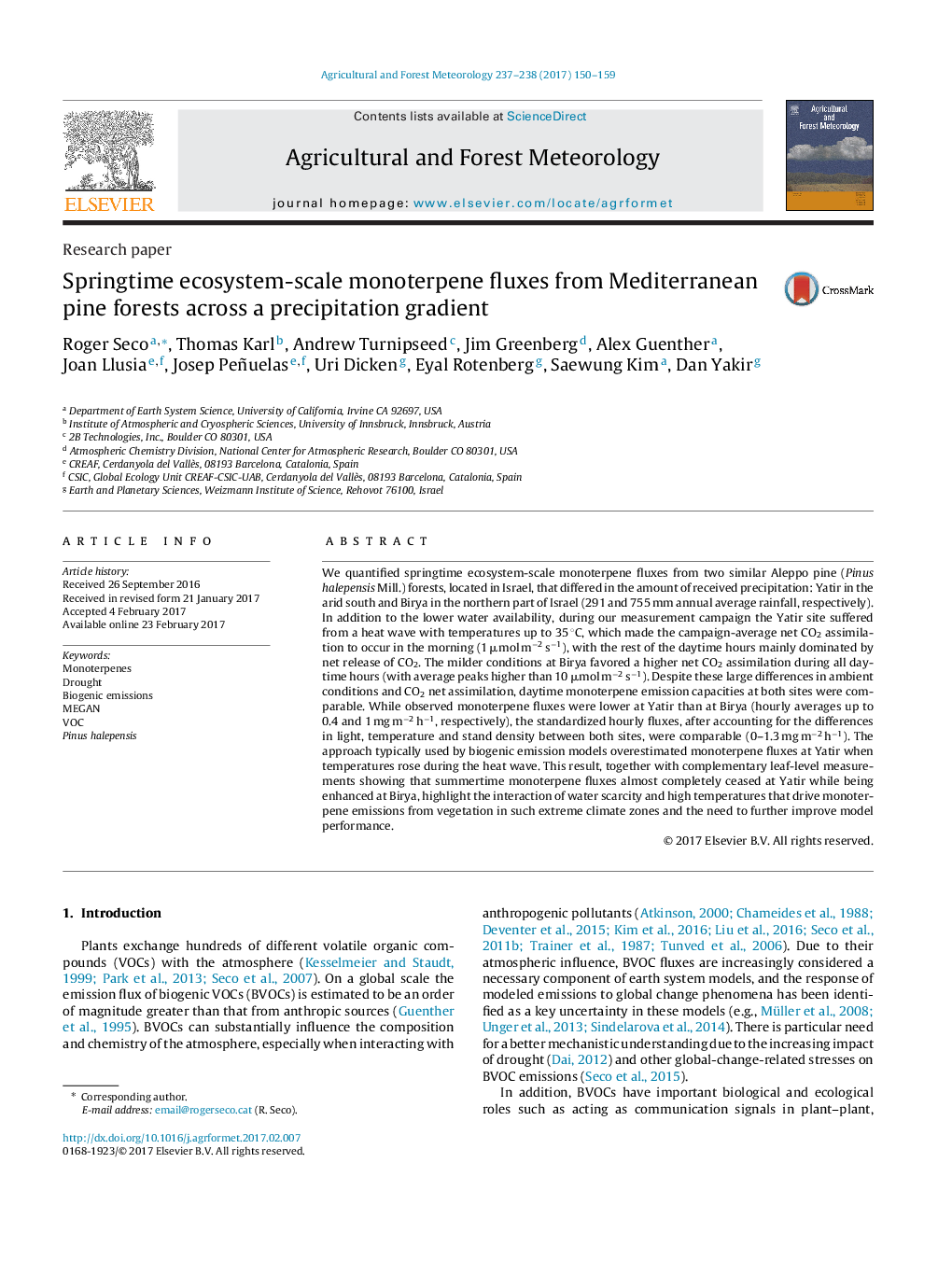| کد مقاله | کد نشریه | سال انتشار | مقاله انگلیسی | نسخه تمام متن |
|---|---|---|---|---|
| 6457912 | 1420861 | 2017 | 10 صفحه PDF | دانلود رایگان |
- We quantified monoterpene (MT) fluxes in two pine forests across a rainfall gradient.
- The drier site suffered a heat wave that lowered net daytime CO2 assimilation.
- Both forests showed similar daytime standardized MT emission capacities.
- Emission models overestimated MT fluxes under high temperatures of a heat wave.
- Interaction of drought and high temperatures drives biogenic MT emissions.
We quantified springtime ecosystem-scale monoterpene fluxes from two similar Aleppo pine (Pinus halepensis Mill.) forests, located in Israel, that differed in the amount of received precipitation: Yatir in the arid south and Birya in the northern part of Israel (291 and 755 mm annual average rainfall, respectively). In addition to the lower water availability, during our measurement campaign the Yatir site suffered from a heat wave with temperatures up to 35 °C, which made the campaign-average net CO2 assimilation to occur in the morning (1 μmol mâ2 sâ1), with the rest of the daytime hours mainly dominated by net release of CO2. The milder conditions at Birya favored a higher net CO2 assimilation during all daytime hours (with average peaks higher than 10 μmol mâ2 sâ1). Despite these large differences in ambient conditions and CO2 net assimilation, daytime monoterpene emission capacities at both sites were comparable. While observed monoterpene fluxes were lower at Yatir than at Birya (hourly averages up to 0.4 and 1 mg mâ2 hâ1, respectively), the standardized hourly fluxes, after accounting for the differences in light, temperature and stand density between both sites, were comparable (0-1.3 mg mâ2 hâ1). The approach typically used by biogenic emission models overestimated monoterpene fluxes at Yatir when temperatures rose during the heat wave. This result, together with complementary leaf-level measurements showing that summertime monoterpene fluxes almost completely ceased at Yatir while being enhanced at Birya, highlight the interaction of water scarcity and high temperatures that drive monoterpene emissions from vegetation in such extreme climate zones and the need to further improve model performance.
Journal: Agricultural and Forest Meteorology - Volumes 237â238, 1 May 2017, Pages 150-159
